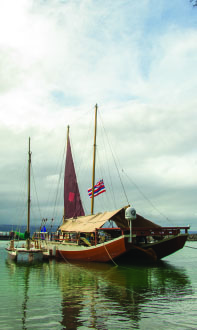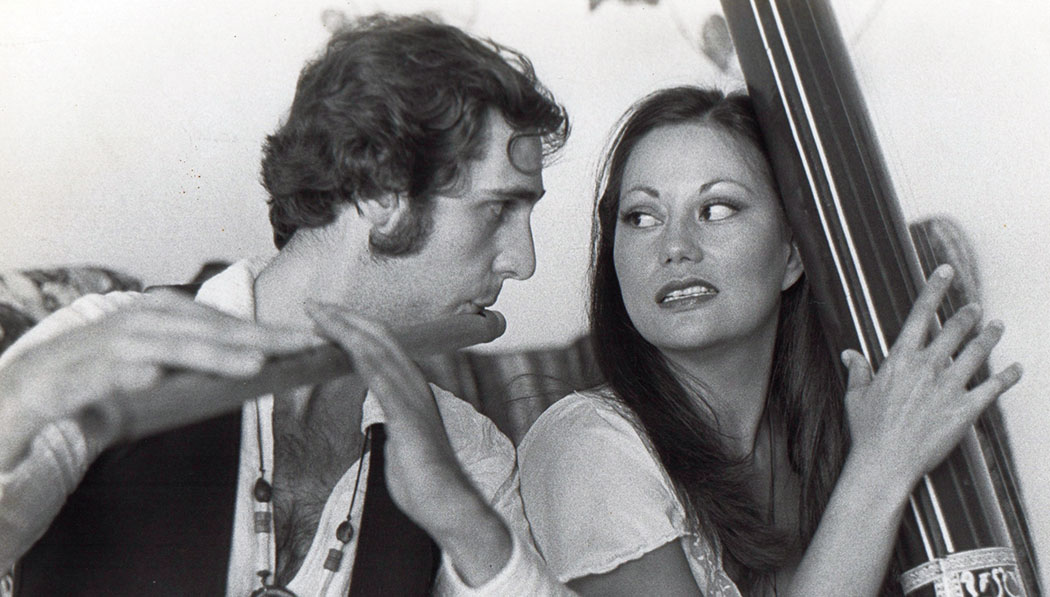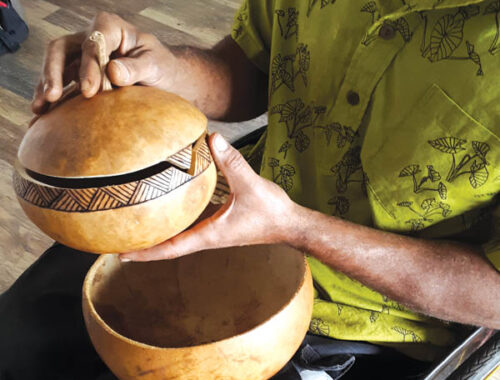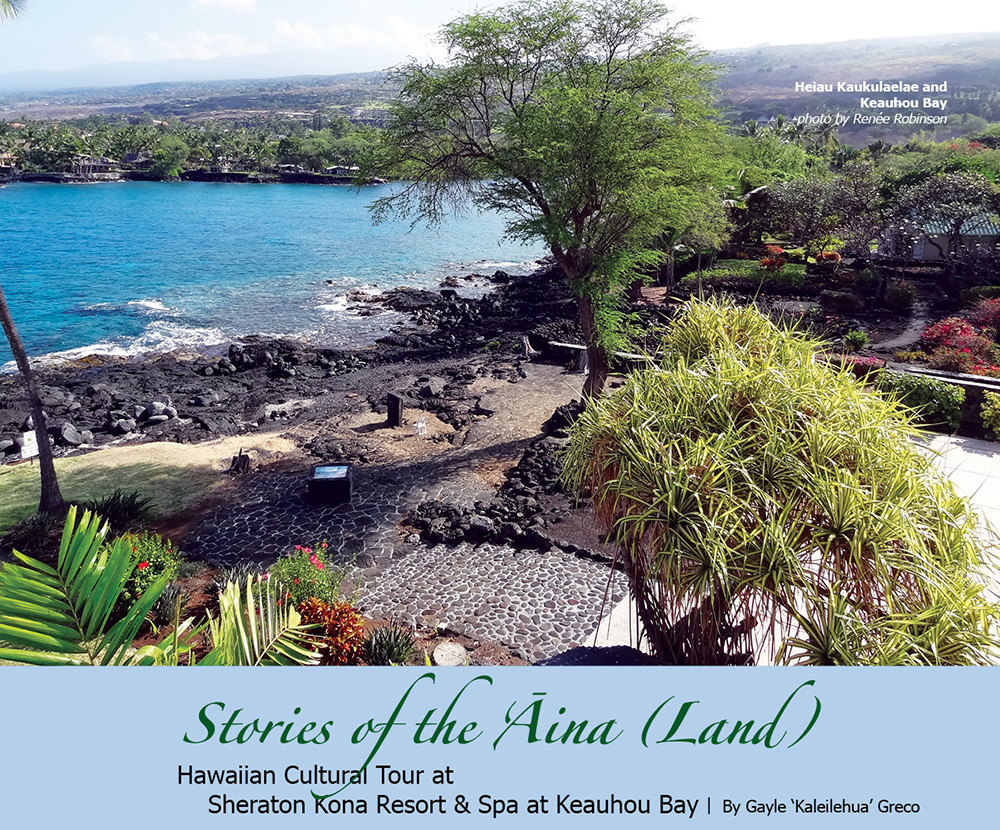
The Worldwide Voyage of Hōkūle‘a

Mālama Honua Update: Legs 28 and 29 brought Hōkūle‘a to the Galapagos, Rapa Nui, Pitcaairn, and the Marquesas Islands
After passing through the Panama Canal in January, Hōkūle‘a engaged in a cultural exchange with several indigenous groups in Panama before setting sail for the Galapagos Islands, a UNESCO World Heritage Site known for its vast number of endemic species.

When they arrived in Puerto Ayora, the capital city of Santa Cruz Island in the Galapagos, the crew was joined by a contingent of teachers and students from Hawai‘i as well as representatives from The Nature Conservancy and Conservation International for an educational visit.
During their stay, the crew and participating schools engaged in activities to further their understanding of the area’s fragile ecosystem and how its preservation aligns with the Worldwide Voyage’s Mālama Honua mission.
Off To Rapa Nui, Pitcairn

Höküle‘a. photo by T. Ilihia Gionson
From one UNESCO World Heritage Site to another: 16 days and 1,900 nautical miles after departing the Galapagos, Hōkūle‘a returned to the Polynesian triangle—back to Rapa Nui, where the canoe last visited 18 years ago. Because of its tiny size and remote location, Rapa Nui is considered one of the most difficult islands to find using traditional wayfinding.
Hōkūle‘a was honored with a traditional landing ceremony on Anakena Beach on February 27, the site of historic seafaring welcomes on Rapa Nui. The crew was joined by the Nahiku Student Delegation from Hawai‘i as they met with both the Governor and Mayor of Rapa Nui, visited kūpuna (elders) at Hare Koa Tiare Care Home, and toured Museo Rapa Nui. The crew also connected with the Toki School of Music for a day of community service and voyaging outreach.
The crew then departed from Rapa Nui headed to Pitcairn. During their one-day visit with the Pitcairn community, the crew engaged with one of the families the crew met when Hōkūle‘a last visited in 1998.
Arrival at Nuku Hiva
After 10 days on the sea after Pitcairn, the crew arrived on the island of Nuku Hiva in the Marquesas on April 2. The crew received a warm welcome from the community celebrating Hokulea’s journey around the world. Upon arrival, the crew members met up with the family who welcomed the crew when Hōkūle‘a first sailed to the Marquesas in 1995 as a part of the Nā ‘Ohana Holo Moana Voyage.
Hikianalia Departs Hawai‘i
Meanwhile, Hikianalia is underway on a 2,200 nautical mile sail to Tahiti to meet Hōkūle‘a and escort her back home. A team of five apprentice navigators and one primary navigator will be targeting a block of three atolls—Rangiroa, Tikehau, and Mataiva—at the western end of the Tuamotu Archipelago.
Hikianalia left Palekai in Hilo on March 26. This journey to Tahiti marks the inaugural voyage as captain for apprentice navigator Kalā Baybayan Tanaka. Tanaka is an educator and apprentice navigator with Maui’s voyaging society, Hui o Wa‘a Kaulua, where she teaches about Polynesian wayfinding techniques to children and other interested learners. Tanaka draws her inspiration and connection to voyaging from her father and pwo navigator, Kālepa Baybayan, who will also be aboard while Kalā captains Hikianalia to Tahiti. ❖


